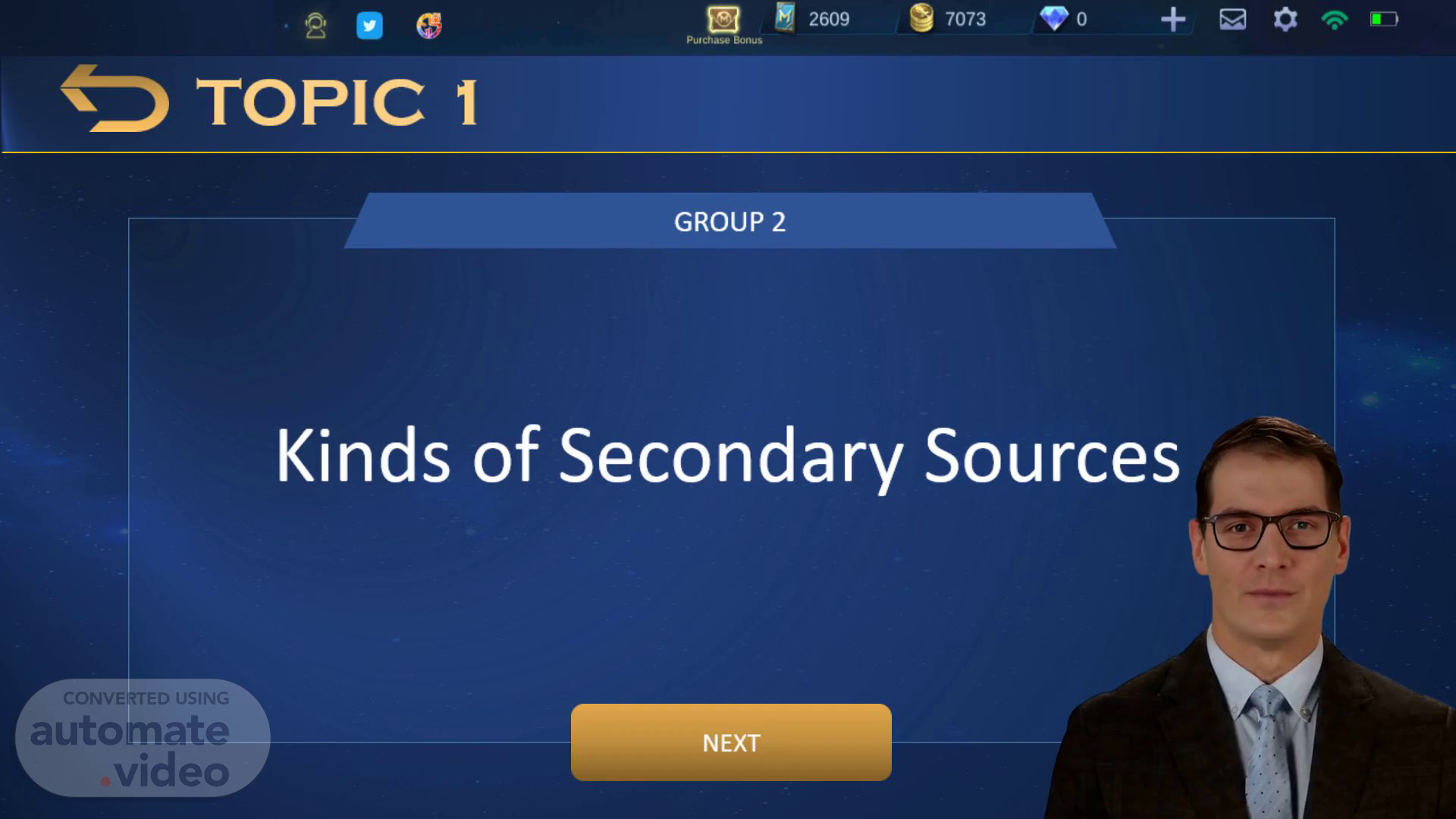Scene 1 (0s)
[Virtual Presenter] Topic 1 Group 2 Kinds of Secondary Sources next.
Scene 2 (9s)
[Virtual Presenter] Topic 2 Books Historical books, written by scholars or experts, provide interpretations and analyses of specific historical periods, events, or themes, often synthesizing information from primary sources. next.
Scene 3 (28s)
[Virtual Presenter] Topic 3 Journal Articles Academic articles, published in academic journals, present research, analysis, and arguments on historical topics, reviewing existing scholarship or providing new insights based on primary sources..
Scene 4 (48s)
[Virtual Presenter] Topic 4 Encyclopedias And Databases Reference works, encyclopedias, and databases are essential sources for showcasing and synthesizing existing knowledge on historical events, figures, or periods. next next.
Scene 5 (1m 8s)
[Audio] Topic 5 Biographies And Autobiographies Biographies, written by historians or biographers, analyze the lives, actions, and impact of historical figures, often serving as secondary sources reflecting the author's perspective on past events. next.
Scene 6 (1m 24s)
[Audio] Topic 6 Documentaries And Films Historical documentaries or films are visual representations of historical events, figures, or themes, often incorporating primary sources..
Scene 7 (1m 37s)
[Audio] Topic 7 Historical Reviews And Critiques Critical reviews and theses provide in depth analysis and original research on historical topics, often contributing new insights or interpretations to the field..
Scene 8 (1m 51s)
[Audio] Topic 8 Conference Papers And Presentations Scholarly presentations or papers are presentations or papers given at conferences or symposiums, sharing research findings, analyses, and interpretations of historical subjects..
Scene 9 (2m 8s)
[Audio] quiz 1. What is the main purpose of secondary sources? A) To give firsthand accounts B) To analyze and interpret primary sources C) To provide fictional stories 2. Which secondary source type includes books that interpret historical events? A) Journal Articles B) Historical Books C) Documentaries next.
Scene 10 (2m 28s)
[Audio] 3. Why are journal articles important as secondary sources? A) They provide new ideas and detailed analysis B) They are mainly opinion based C) They focus on fictional events 4. What do encyclopedias and databases help with in historical studies? A) They give overviews and summaries of events B) They provide fictional stories C) They are only used in primary research.
Scene 11 (2m 50s)
[Audio] 5. Biographies are secondary sources because they: A) Tell the author’s life story B) Analyze a historical person’s life using primary sources C) Are always factual without any opinion 6. What is a key purpose of historical documentaries? A) To bring history to life and interpret events B) To focus only on entertainment C) To avoid any primary sources.
Scene 12 (3m 15s)
[Audio] 7. Historical reviews and critiques are valuable because they: A) Offer new research or detailed analysis on historical topics B) Focus on retelling known facts without opinion C) Are simple overviews 8. Where are conference papers usually presented? A) In public libraries B) At academic conferences or symposiums C) In private collections.
Scene 13 (3m 40s)
VICTORY.
Scene 14 (3m 46s)
[Audio] Answer key B) To analyze and interpret primary sources B) Historical Books A) They provide new ideas and detailed analysis A) They give overviews and summaries of events B) Analyze a historical person’s life using primary sources A) To bring history to life and interpret events A) Offer new research or detailed analysis on historical topics B) At academic conferences or symposiums.
